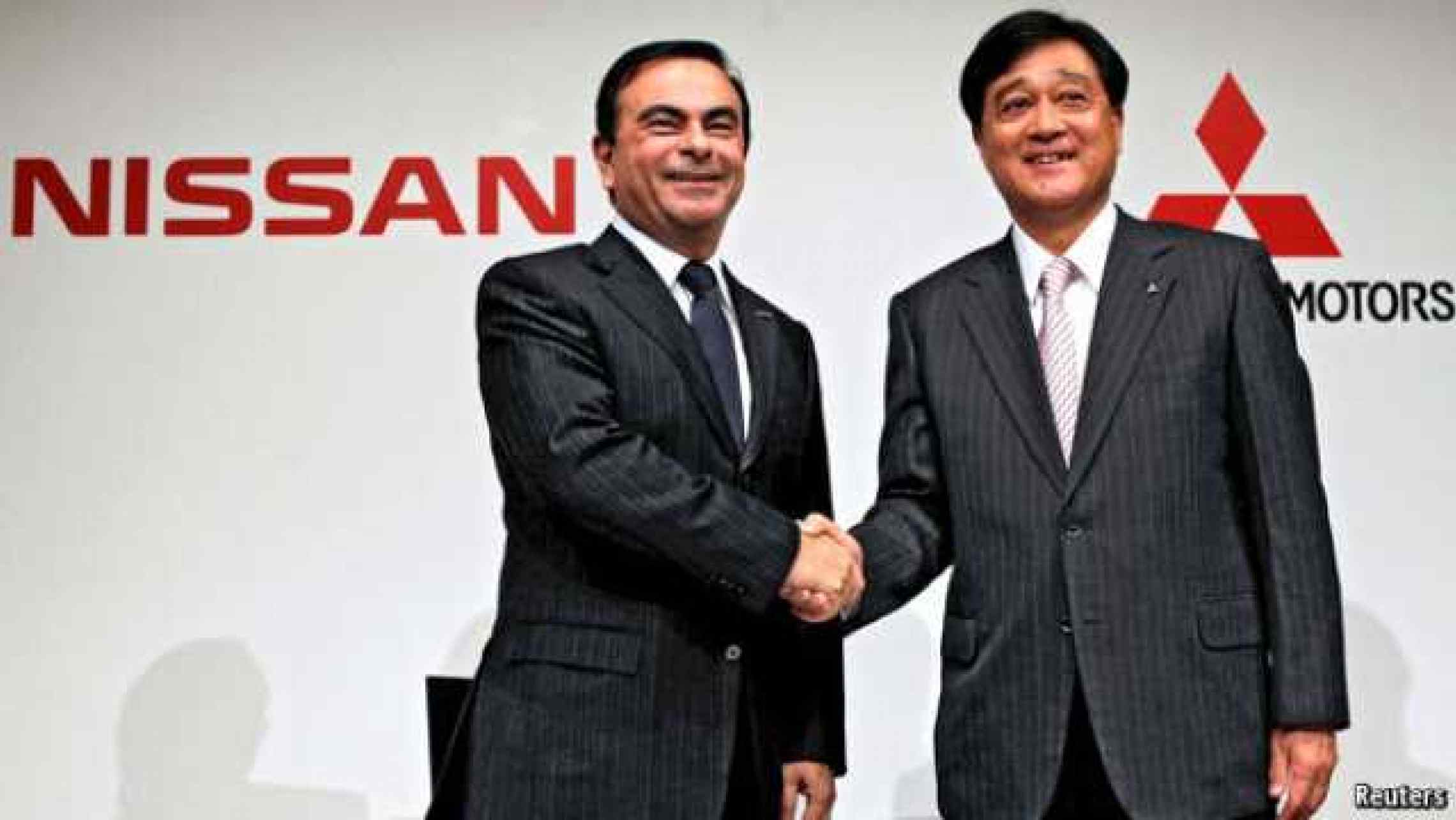Nissan and Mitsubishi make an alliance
Assembling cars is easier than joining together the companies that make them
SIZE matters to car buyers, as the current craze for SUVs, or similar bloated road-hogs, shows. But size matters even more for mass-market carmakers. The quest for scale helps explain the wide grin of Carlos Ghosn, boss of both firms in the Renault-Nissan alliance, as he announced on May 12th that Mitsubishi would join the fold. Nissan will pay $2.2 billion for a 34% stake in Japan’s sixth-largest carmaker, Mitsubishi, to buttress the alliance model Mr Ghosn has created. It seeks to avoid the disastrous full mergers that have beset the car industry in past decades, but goes further than the limited co-operation deals that fail to address the industry’s shortcomings: wafer-thin profitability and the hefty cost of rolling out new models.
Carmaking is best done at scale in the rough and tumble of the mass market. Without the lure of a premium badge, wooing consumers is tough. Boosting profits requires selling more cars or cutting costs. Around 8.5m cars rolled out of Renault-Nissan’s factories last year, a long way shy of the “10m club” into which Volkswagen and Toyota will soon welcome General Motors (GM). But add Mitsubishi’s 1m annual vehicles and membership comes much closer. Ever since Renault teamed up with Nissan in 1999, Mr Ghosn has been on the lookout for new partners. Renault owns 43% of Nissan and the Japanese firm 15% of its French counterpart; Mr Ghosn is boss of both. Nissan has become the leading Japanese brand in China through a joint venture with Dongfeng, a state-controlled car company. In Russia it has joined up with AvtoVaz, a big-but-struggling Russian carmaker, in the hope of grabbing a big chunk of a market that could eventually rival Germany in size.
Big car firms must make vehicles for every segment in every part of the world to cover huge overheads. This makes Mitsubishi a tempting prospect: it is popular in Thailand and in other countries in South-East Asia where Nissan is weak. Mr Ghosn says that he sees plenty of synergies in purchasing; the platforms that underpin cars and that joint development projects will justify the deal.
Mistubishi is also appealing for other reasons. First, it has a decent line-up of SUVs and pick-up trucks. Second, the firm’s recent admission that it cheated on fuel-economy tests in Japan has hit its shares, making the price an inviting one.
What does the deal hold for Mitsubishi? Simply put, it needs help. It is probably Japan’s weakest carmaker. It is buckling under the demands of developing fuel-efficient engines and electric and hybrid powertrains to meet ever-stricter emissions targets. Mitsubishi also needs to plough money into connectivity and autonomous driving—a huge burden for a small carmaker—while contending with its fuel-economy scandal. Appealingly, the Mitsubishi brand and management will remain separate (though Mr Ghosn will doubtless share his opinions on running a car business). A Japanese rescue, albeit with a foreign tinge, and a step towards overdue consolidation of the country’s car industry, will please the government. Nissan sources deny, however, that this is an orchestrated “mating game”.
What looks like a good deal for both firms may nonetheless disappoint. Full mergers in the car industry generally end in failure—GM with Fiat, Daimler with Chrysler and indeed Daimler with Mitsubishi, which collapsed in 2004—are prime examples. Loose co-operation to develop engines and individual models generally do not bring the cost saving they might. But critics suggest that the alliance between Renault and Nissan has held together as a result only of moving slowly. Even by 2020, after 21 years in alliance, just 70% of their vehicles will be built from common parts. Some say such caution means huge opportunities to cut costs further and faster have been missed. How quickly Nissan and Mitsubishi collide remains to be seen. The car industry is adept at assembling large vehicles, but inept when it comes to constructing the companies that actually make them.
Source: https://www.economist.com/news/business-and-finance/21698734-assembling-...



